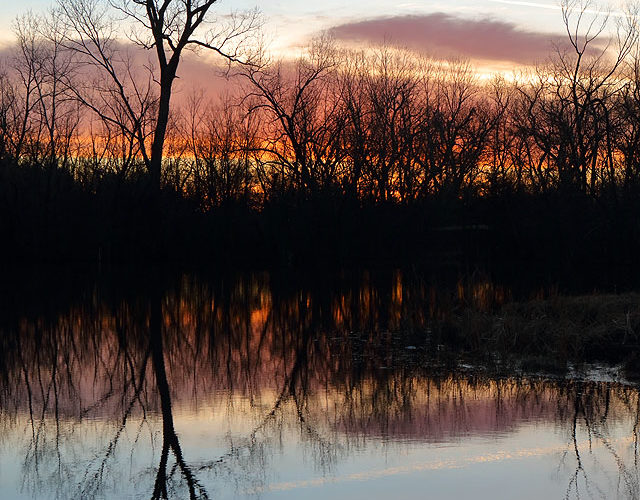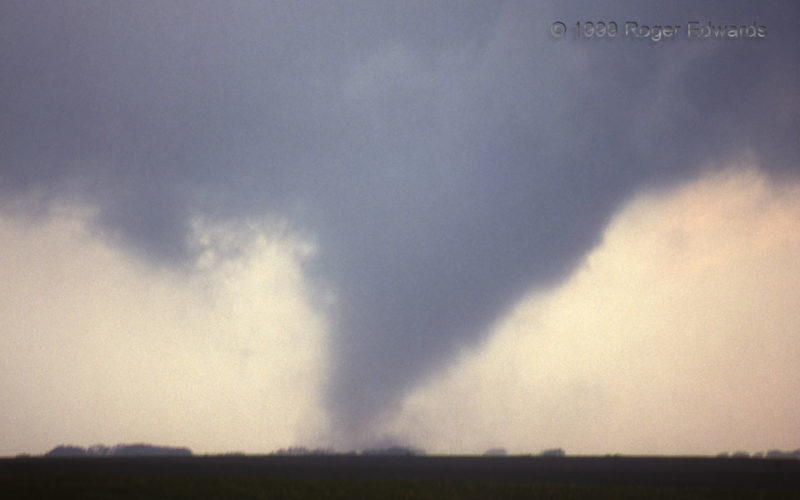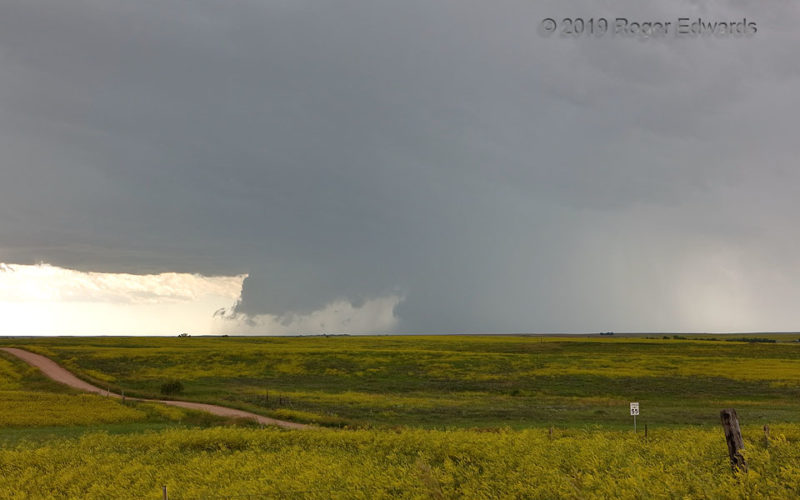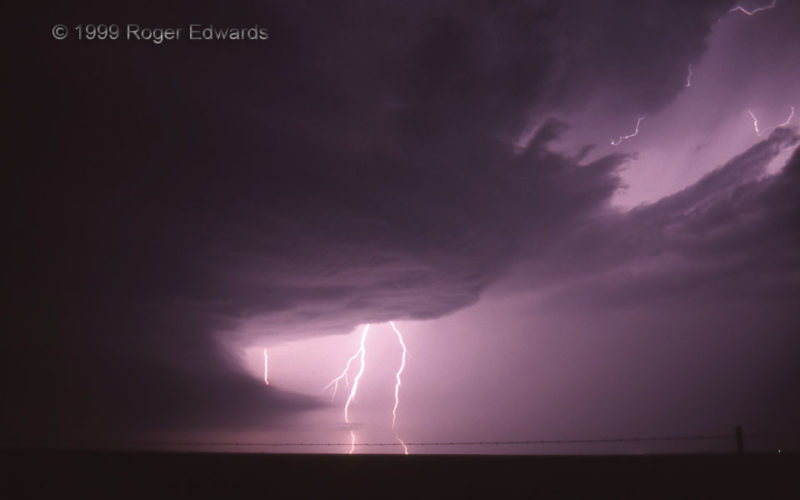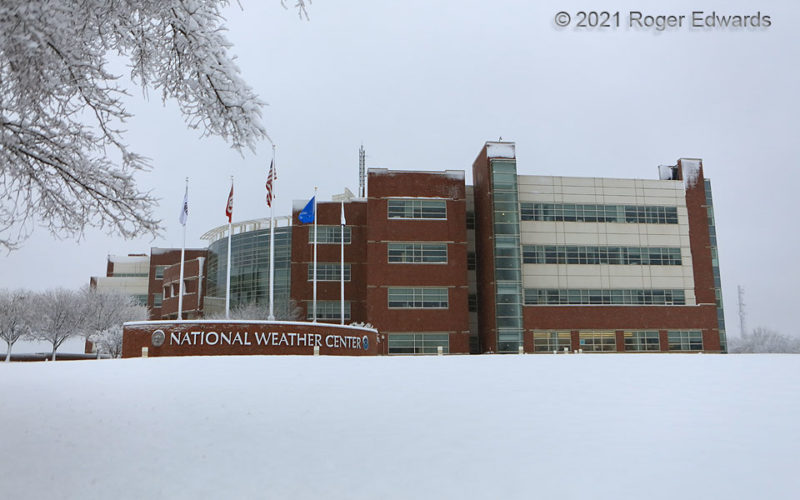A serendipitously symmetric sunrise scene serenaded sight and soul, on this crisp central Oklahoma morning. Thin, high cirrus and a couple contrails brightly reflected higher light, while altostratus chunks brought warmer-toned hues from lower elevations where the rays had to penetrate more atmosphere. This was yet another among a growing collection of single-location views from the last … [Read more...]
One-and-Done Cone
“Cones” of this sort crisscross Kansas often in most springs. That included the year of this slide. The parent supercell formed in a narrow sliver of favorable instability and shear tucked between a dryline, warm front and outflow area, lasted just long enough to produce this tornado in the warm-frontal zone, then…poof, gone: tornado and supercell alike. Had there been a dual-polarization … [Read more...]
Ice Machine: Let It Go
The beauty of the wildflower-carpeted rolling Great Plains belied the violence of the messy supercell crossing the distance from right to left, at high velocity. This post-cold-frontal storm moved from north-central Wyoming into southwestern South Dakota and increasing moisture, aiding and abetting a fast-moving, outflow surfing, rotating hail machine, with severe gusts to boot. The front-flank … [Read more...]
Twin Vault Blast
Though similar in brightness, distance and shape, these flashes aren't identical, so we'll call them fraternal twins. By the time we arrived at this vantage to shoot lightning, what had been a skinny, poorly organized, young supercell at sunset had latched onto the low-level jet and its associated high-helicity inflow layer. That fattened the storm a great deal and made it destructively severe, … [Read more...]
New Year’s Dawn in Snow
Accumulating snows don't happen every winter in these parts, so even after all this time, it's still a novel notion for this man born of lower latitudes to explore them, my aversion to the cold temporarily set aside. The very wet, heavy snowfall adhered not only to the ground, but to the windward (north) sides of trees and buildings like this. The scene after a night shift reminded me of … [Read more...]
Little Contrail
Not all nice sunsets require layers of textured high clouds lit dazzlingly from beneath. This was one of my favorites for its clean, balanced simplicity, punctuated by that fleeting moment when the plane passed directly astern of the setting sun. The slightly dusty post-dryline air subtly diffused colors in ways not often seen in these parts. As a bonus, I was treated to well-lit thunderheads … [Read more...]
- « Previous Page
- 1
- …
- 109
- 110
- 111
- 112
- 113
- …
- 386
- Next Page »
